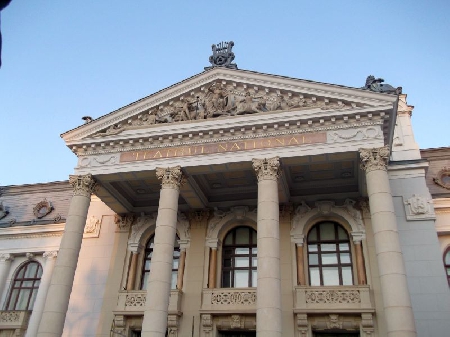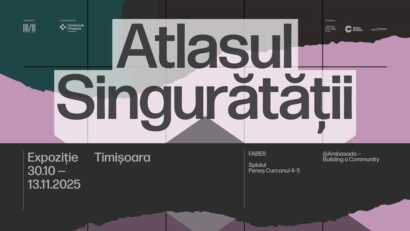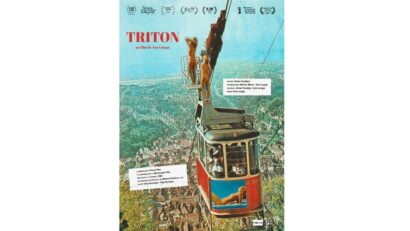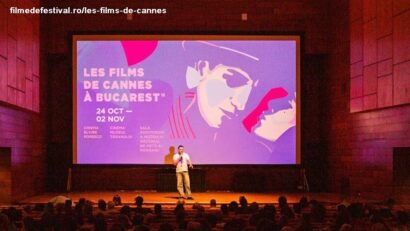The National Theater in Iasi, the oldest theater in Romania
The National Theater in Iasi is where the first play in Romanian was staged, by Gheorghe Asachi, in 1816.

Luana Pleşea, 23.02.2013, 13:43
Recently, actor Ion Caramitru, the president of UNITER, the National Theater Union in Romania, has announced his intention to organize the 2013 edition of the UNITER Awards Gala in Iasi, in the Big Hall of the National Theater. This is the 2ndtime when the Gala is not held in Bucharest, the 2007 UNITER Awards Gala being organized in Sibiu, which, that year, was designated the European Capital of Culture. For the Vasile Alecsandri National Theater in Iasi, this event strikes a balance between normality and abnormality, as Cristian Hadji-Culea, the artistic director of the theater, has told us:
“The National Theater in Iasi is the first national theater in Romania. Here you can find the roots of Romanian theater, not only of institutionalized theater, but of theater in general. It was here that the first play in Romanian was staged, by Gheorghe Asachi. So, from this point of view we are speaking of normality. What is not normal is that, in such a centralized country like Romania, this Gala is always taking place in Bucharest. Probably this Gala will be organized in Iasi because King Carol I named our city the capital of Romanian culture after it lost its status of capital of Moldavia.”
Until the 1850s, Iasi had been the center of the drama movement in the French language in the Romanian Principalities. At the time, more precisely in 1816, Romanian scholar Gheorghe Asachi staged the first play in the Romanian language entitled “Mirtil and Hloe” , an adaptation after Gessner and Florian.
Considered the oldest and most beautiful theater building in Romania, the building that is now hosting the National Theater in Iasi was erected between 1894 and 1896 after the blueprints of famous Viennese architects Fellner and Helmer, who designed similar buildings in Vienna, Prague, Odessa and Zurich. Inaugurated at the same time with the theater building, the powerhouse of the theater marked the beginning of electric lighting in Iasi. The Big Hall of the National Theater in Iasi was re-inaugurated in June 2012 after being refurbished according to the original architectural plans. Hanging in the middle of the big hall is a Venetian crystal chandelier with 109 bulbs while 1,418 electric lamps shed their light on paradisiacal allegories, nymphs and angels framed by Rococo structures on the ceiling painted by Al. Goltz.
The beauty of the hall was one of the elements that made the president of UNITER decide to organize the UNITER Gala in Iasi. Actor Ion Caramitru said that the event would support the candidacy of the city of Iasi to the title of European Capital of Culture in 2021. If Iasi wins the title, the National Theater in Iasi would have a central role in the respective project. Cristian Hadji-Culea:
“At present the National Theater in Iasi has 4 halls, therefore almost all types of shows can be staged here because we have almost all types of performance spaces. Aside from the hall with an Italian stage, which is the Big Hall, there is also a hall we call the Cube, which we built when the Big Hall was being refurbished. The room has 150 seats and is very tempting for the directors who worked or would like to work here. We also have an adjacent historical building, the first powerhouse of the city of Iasi, where musician George Enescu played and writer Mihail Sadoveanu lived. It is called the Theater Factory hall, it can seat more than 100 people and we intend to make it available to the young artists. There is also the Studio Hall seating 100 people. For the Theater Factory we have inaugurated this year a theater direction debut contest, which we hope to be successful. We hope to have more winners because our interest here, at the National Theater in Iasi, is to be able to discover new theater forms for a new public.”
The Vasile Alecsandri National Theatre in Iasi has in time held many festivals that can be included in the campaign to promote the city as a European Capital of Culture. The theatre’s director Cristian Hadji Culea:
“One of these festivals is closely linked to one of the buildings belonging to the theatre. Opposite to where we are today, there used to be a hall which is the birth place of the first Jewish theatre in the world. Avram Goldfaden founded a theatre that for the first time held its performances in Yiddish, a theatre he then went on to recreate in New York. To continue this tradition, we have a festival which we initiated about 15 years ago which speaks about the exchange of influences between the Jewish community and other European cultures. The festival was first held during the time of my predecessor Ion Holban and took place on a regular basis. Recently, however, it has been difficult to find the funding. Another festival hosted by the theatre is entitled ‘To the Very East of Europe’, which again deals with the interaction between the East and the West of Europe. We have invited all theatre companies from the Republic of Moldova to participate in this festival, thus restoring in a way the unity of a geographical space that has been divided by borders for a long time. Our intention at the moment is to create a new festival entitled ‘Encounters’, an event dedicated to creativity in theatre and the language of theatre.”
While it remains to be seen whether Iasi wins its bid to become the European Capital of Culture, one thing is certain: the National Theatre Union Gala will be held at the city’s National Theatre on the 13th of May this year. As for the highlights of the theatre’s current season, the internationally famous Romanian director Silviu Purcarete recently staged Eugen Labiche’s comedy “The Italian Straw Hat”, while the equally celebrated director Mihai Maniutiu will start a new collaboration project with the theatre.






























